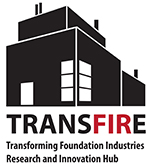Mapping resource consumption and emissions in the Foundation Industries
Understanding the intricate flows of resource consumption and emissions within various industries is paramount in pursuing a sustainable future. As part of TransFIRe’s Work Stream 1 (WS1), we are working on a ground-breaking study that bridges a critical gap in our comprehension of foundation industries. Foundation industries include the cement, ceramics, chemicals, glass, metals, and paper sectors – the backbone of our society. The developed study introduces a methodological framework that addresses the gap in mapping resource flows and provides a replicable blueprint for interpreting the complexities of resource consumption and emissions. By adopting this approach, we gain profound insights into the collective performance of these industries and their sectors. Furthermore, the study benchmarks the current performance of the UK against global averages and best practices, acting as a compass for tracking progress towards ambitious net-zero targets. One of the key merits of this study lies in its ability [...]




